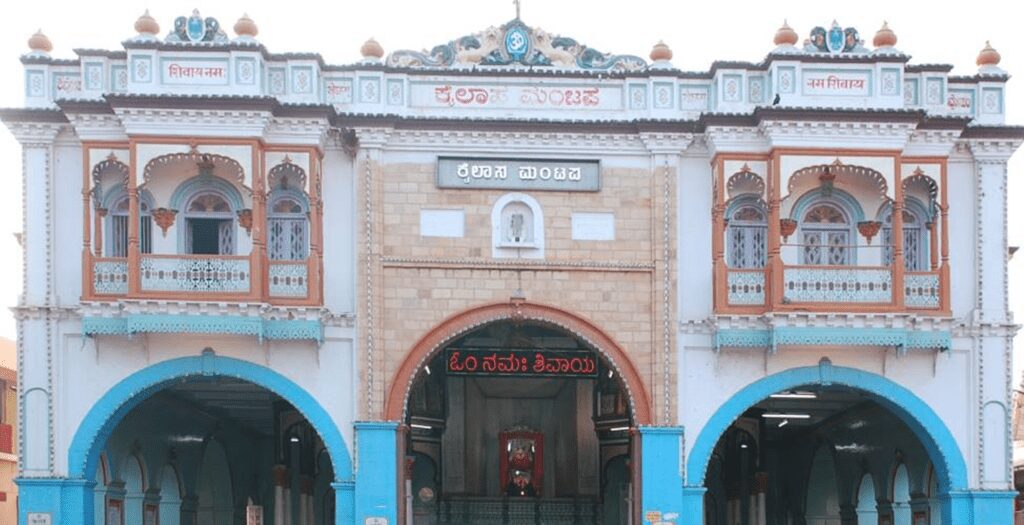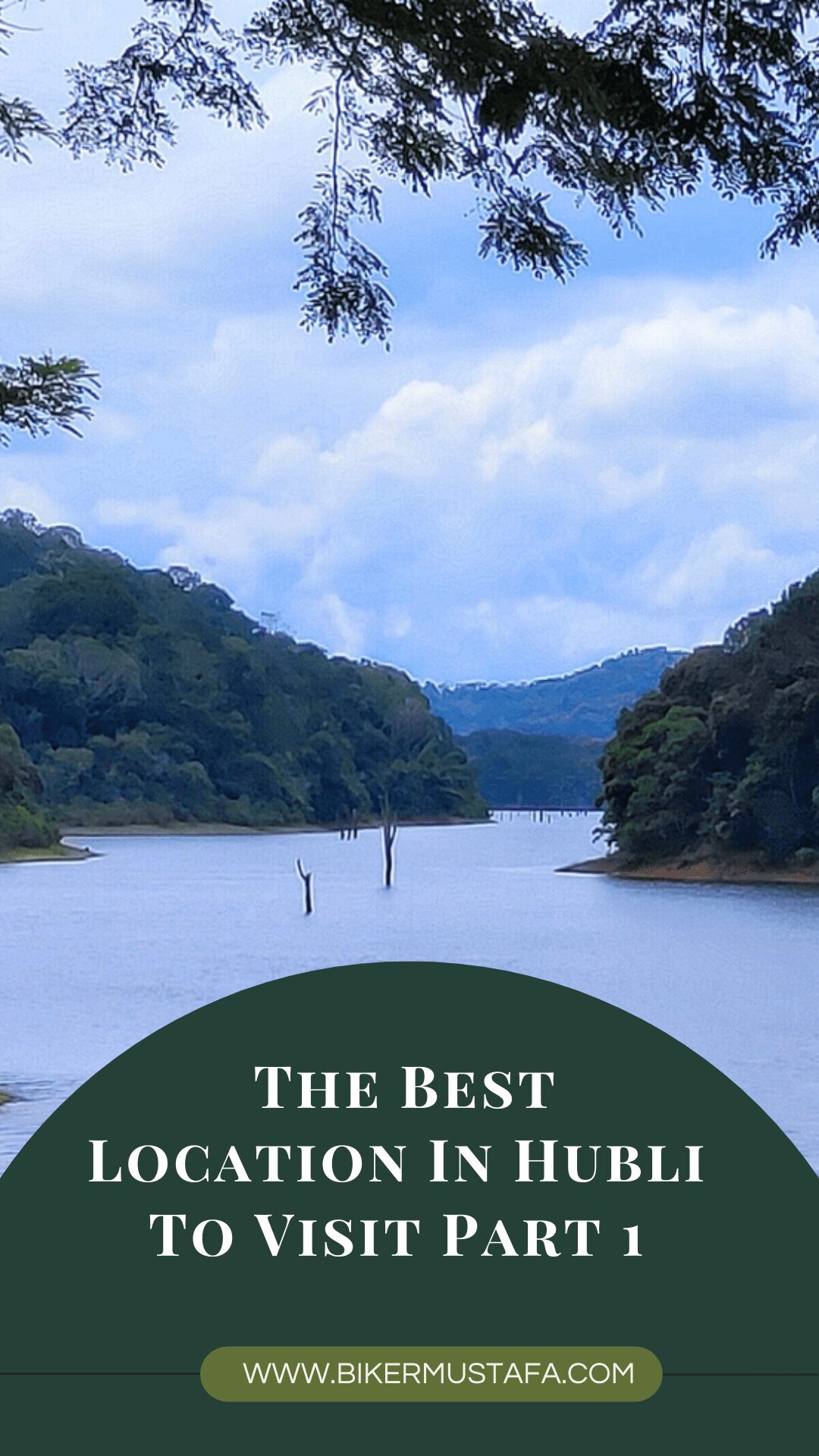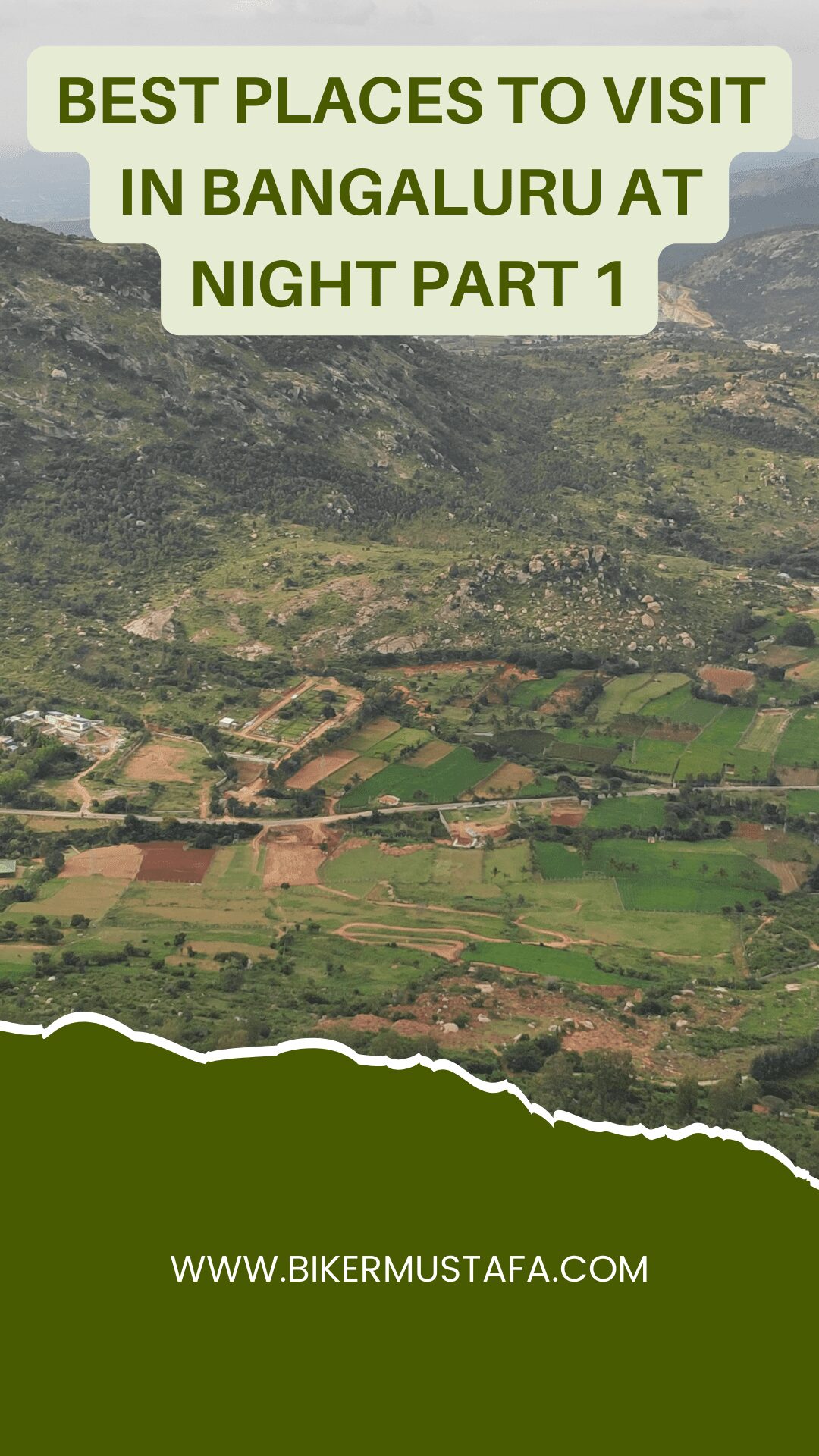The Best Location In Hubli To Visit Part 1
Are you curious as to what a small, unusual locale might contain? I guess surprise! Hubli is home to well-known tourist attractions and excursions that uplift your spirit and give you a peek at this region’s illustrious past. Hubli currently derives its fame from the handloom and cotton ginning industries. There are many exciting locations to see in Hubli, including lovely parks, temples, lakes, and sanctuaries. There are so many sights to feast your eyes on that one will undoubtedly become confused.
The Best Location In Hubli To Visit Part 1
Siddharoodha Math
Indian philosopher and Hindu guru Siddharudha Swami. Biography. All of Sadguru Siddharudha Maharaj’s life, he led an austere lifestyle. He strongly disagreed with the conventional belief that Brahmins were the only ones eligible for liberation and strongly opposed the practice of casteism. He also conceived of divinity in all that exists. At the tender age of six, Siddharudha—whom Hindus believe to be an incarnation of Shiva, one of the Trinity deities—renounced his home and his ties to his family to search for his Satguru or spiritual master. Later, as a student, Siddharudha gave himself over to Shri Gajadandaswami, a realized soul, and worked at his ashram.
According to Shivadas’ Siddharoodh Charitra, Siddharudha received a blessing from his master and was instructed to go on a pilgrimage to aid those in need, dispel ignorance, and show those who were seeking the proper way to spiritual enlightenment. From that point on, Siddharudha traveled from Kashmir to Kanyakumari, imparting the correct knowledge for spiritual awakening and methodical liberation to everyone aware of his exemplary standards of spiritual practice before arriving in Hubli, where he was immediately acknowledged for his spiritual insight and immaculate sainthood. People from neighboring states came to him in search of comfort, fulfillment of wants, and spiritual enlightenment.
He passed away in Hubballi in 1929 and was buried in his ashram. For his followers, he was said to perform miracles. A Kannada proverb circulates in the native language of India: The phrase is “Siddharudhara Jolige Jagakkella holige.”
It alludes to the meals provided at his ashram and the marvels they bring about.

IMAGE SOURCE: SHRI SIDDHARODA SWAMI MATH TRUST
Followers
- He had a Muslim student named Kabirdas (not his actual name), who was renowned for his devotion to him, and he served the people without showing any preference for any group.
- He had one supreme disciple, Parampoojya Shri Kalavati Devi (also known as Aai, which means mother in Marathi). The greatest saint, formerly known as Rukmabai Mallapur, is well-known for having passed away at Shri Harimandir in Angol, Belgaum, where she is buried.
- Gurunatharudha was one of his dedicated followers. His tomb is next to Sri Siddharudha Swami’s tomb in Hubli Matha.
- He granted sannyasa to Swami Muktananda, who continued to study in his Hubli ashram till Siddharudha’s passing in 1929. After that, he left to continue his studies with Muppinarya Swami at his Sri Airani Holematt in the Ranebennur Haveri District.
- Shri Shivaputra Appaji, whose samadhi is located 20 meters away from Siddharoodh Math, was a student of Shri Guru. Shri Abhinav Shivaputra Swamiji is currently in charge of that math.
- His top pupil was Sri Iychanda Bolliappa from the village of Devanagari. In Cherambane village, Kodagu district, Karnataka, Siddharudha Mata was frequently visited by Swami Bolliappa.
Teachings
Known as a Hindu master of the Saivite Advaita school of Vedic philosophy, Siddharudha Maharaj has a large following throughout India, particularly in the small towns in the states of Karnataka, Maharashtra, and Telugu.
One of Hubli’s top tourist attractions is Siddharoodha Math, constructed in Shri Sidharoodha Swamy’s honor. It is of immeasurable importance to Hindu culture, and devotees come here to celebrate Maha Shivratri with the utmost zeal. Siddharoodha Math is one of Hubli’s most well-known tourist attractions for those with pure souls. Without creating any religious distinction, Sidharoodha Math served his people. In addition to Parampoojya Shri Kalavati Devi, he had a Muslim pupil named Kabirdas. Few independence fighters, including Mahatma Gandhi and Gangadhar Tilak, came to this math.
| Location | Karwar Road, Hubli |
| Time | Open from 6.00 am – 6.00 pm |
Unkal Lake
Unkal Lake is one of Hubli’s top tourist destinations. This lovely lake, which covers an area of 200 acres, attracts many visitors, especially on the weekends. Despite being close to 110 years old, the lake’s enchantment doesn’t seem to fade. Additionally, it serves as Hubli’s primary water supply.
Historical Meaning
Unkal Lake has become a well-liked picnic area for residents of Hubli and the surrounding area of Dharwad, although few know that it also has historical significance. It is well known to be Shri Siddappajja’s Karma Bhoomi. This holy person, born in 1859, gave up all of their worldly pleasures at the tender age of 14 to pursue peace. When he passed away on January 31, 1921, he continued to live in the Unkal Mailarlingda Temple.
Since then, the community has held an annual fair in Shri Siddappajja’s honor. Several people congregate nearby and participate in various cultural events held throughout this fair. Several stalls serving different delectable foods have been set up here to add to the festivities.

Facilities for Accommodations
Many hotels have been built close to Unkal Lake to accommodate tourists. The closest place to stay in this location is Hotel Naveen. It is only 0.7 km away from the lake. The hotel has all the amenities required for a comfortable stay in the modern world. You could pay about Rs. 3,500 for one night at the hotel. Additionally located nearby are Clarks Inn and Hotel Metropolis.
Some excellent eateries in the area are Sagar Palace, A-1 Punjab, Rasoi, and Chicken Hut Fast Food. Along with other savory treats, they serve Hubli’s specialty meal.
This lake, one of Hubli’s most popular tourist destinations, has a significant religious and historical value.
Boating can be enjoyed while admiring the Swami Vivekananda statue in the middle of the lake. Most people go to this lake in the evenings since it has beautiful views and is a great place to unwind. Birdwatchers stationed at the river’s edge can view a variety of bird species. This is a well-known location for family picnics where locals can be seen wandering across the park. One of the most incredible spots in Hubli for couples is the lake, which offers romantic views of the setting sun and a tranquil ambiance.
| Location | Bairidevarkoppa, Hubli |
| Time | From sunrise to sunset |
Chandramouleshwara Temple.
The Chandramauleshwara Temple is an 11th-century Shiva temple with Chalukyan architecture in Unkal (Hubballi), Karnataka, India. It is also known as the Chandramouleshwara Temple at Unkal. The temple illustrates the Gandhara layout found in Sanskrit books on buildings and features a square plan with four entrances from the four cardinal directions. A Chaturmukha (four-faced) Linga and numerous more mandapas (halls) were once located in the center of the temple, but the remaining building is much smaller. The temple maintains a prehistoric illustration of a somewhat quirky Hindu architectural style. The temple is famous for combining the art of Vedic deities with that of Shaivism, Vaishnavism, and Shaktism.
Under the Ancient Monuments and Archaeological Sites Act is recognized as a Protected Monument of National Importance (1958). It is overseen by the Archaeological Survey of India’s Dharwad circle (ASI).
Date and place
East of the Unkal lake in Unkal, Hubli City, is where you’ll find the Chandramauleshwara Temple (NH 67, Old NH4). Unkal, known by the ancient names Unukal and Unukallu, is a municipality in the Hubli-Dharwad district.
A monument from the Kalyana Chalukyan period is Chandramouleshwar. It doesn’t have a foundation inscription. Thus its age must be determined from other notes that mention it, the building’s architectural features, and its iconography. A date no later than the eighty of the eleventh century “looks permissible,” according to Dakhy and Meister, academics well-known for their encyclopedia on Indian temple architecture and history.
The temple was constructed in the 12th century or earlier, as evidenced by the discovery of two 12th-century stone inscriptions in Unkal hamlet. According to the Indian Archaeological Survey, it dates to the 12th century.

Architecture
With a square garbhagriha that can be reached from each of the four cardinal directions, the temple is a magnificent structure that exemplifies the Gandhara layout. Four molded walls, each with a decorative door, make up this open floor design. Each entry is distinctive despite the Pancha shakhas (five concentric bands of beautiful carvings) that decorate the doorjambs. One of the most admirable doors from the 11th century is the eastern door, which is good. There are two dwarapalas on each entry. There is a pradakshina path around the temple for circumambulation. It also has a Mukha mandapa in the sarvatobhadra style and an antarala.
The temple incorporates Ardha-mandapas that serve as antaralas to accommodate the four entrances while maintaining the architectural and ornamental elements seen on the exterior walls of critical Hindu temples. The north and south sides of the original temple featured mukhamandapas for the pilgrims to assemble, but these have since been gone, and only disfigured and ruined portions of these parts can now be found. A ring of flowers, followed by an alternate horse-and-elephant rajasena, above which are the vedikas with tiny but lovely musicians, and finally, Gandharvas framed between aedicules are the charming features inside and above the mancabandha adhistana.
This temple’s gulika and puspakantha jalas are exquisitely finished with a wood-like finish.
To allow visitors to see only one face of Shiva from wherever they stood, the Chaturmukha linga picture was placed initially right in the middle of the temple. This was relocated later and is currently on the temple’s western side. Henry Cousens’ investigation of this location led him to propose one theory as a possible explanation. After the 13th century, the temple probably underwent damage and fell into neglect. Later, Lingayats took control of the “extremely deteriorated” temple, moved the Chaturmukha linga, and replaced it with the plain linga they preferred.
Pilasters surround the niches on the temple’s outer walls. These show a plethora of Hindu deities and myths from all the major Hindu traditions, including Brahma, Vishnu avatars, and different Siva forms. The influential figures are the Nataraja, Narasimha, dancing Ganesha, Sarasvati, and Mahishasurmardini. Cousens speculated that this temple may be considerably older than the 11th century and may have formerly been a Brahma temple because two of the four lalitabimbas in the sanctum have Gajalakshmi and two have Sarasvati. This is another noteworthy aspect of this structure.
At the edge of Unkal Lake Chandramouleshwara Temple, a 900-year-old temple displays Badami Chalukyan architecture. This monument is protected by the Ancient Monuments and Archaeological Sites (Act (1958)) and is maintained and managed by the Archaeological Survey of India (ASI). Additionally, this is a popular tourist destination in Hubli. This revered temple contains two lingas since it is devoted to Lord Shiva. The main shrine also has four doorways that face four different directions. This is regarded as one of Hubli’s top tourist destinations since you may examine the exquisite sculptures and architectural design of the Chalukyan temple here.
| Location | Sai Nagar, Hubballi, Karnataka 580031 |
| Time | 8.00 am to 6.00 pm |
Indira Gandhi Glass House Garden
When I was in Hubli and had some free time, I was looking for exciting locations to visit when I noticed the Indira Gandhi Glass House and Park. It initially appeared to be an attempt to copy Bengaluru’s Lalbagh. Still, I decided to go.
Here are our conclusions:
- Only 3–4 cars may park in front of the Indira Gandhi Glasshouse. You will need to park on the street if not. Although the position on Google Maps is correct, getting to the entrance may be challenging because one-way streets border the park. Depending on your starting point, you might require a lengthier detour.
- Each participant must pay 30 Rs. There was no parking cost incurred.
- The glass house was the main draw, but there were a few drawbacks. We couldn’t go inside; our only alternative was to look through the entrance glass. There seemed to be some ongoing work. And secondly, the glasshouse in Hubli is more metal and less glass than the one in Lalbagh. As I was looking at it, one strip of glass and two or three stripes of metal roofing on the roof kind of ruined the aesthetic. It might have had a glass roof that was at least 75% glass.
- The Indira Gandhi Glasshouse Park in Hubli has an arena. Nice.
- Skating can be practiced in Hubli’s Indira Gandhi Glasshouse and Park. Nice.
- While there are restrooms, they are not well kept.
- There were a lot of statues of famous people.
- Although it was closed, an aquarium building could be seen.
- There are a few beautiful seating places, play areas, an outdoor gym, etc.
- These artwork sculptures look beautiful beside the glasshouse (and also a bit scary).

I saw no toy train. The Indira Gandhi Glasshouse and Garden is a great place to spend time with family. Some amenities, like the glasshouse and aquarium, are closed off to the public; this is something the government should address. We stayed for almost an hour before leaving. There are numerous pleasant coconut vendors outside the Glasshouse garden wall.
The Indira Gandhi Glass House Garden, which bears Smt. Indira Gandhi’s name is among Hubli’s most breathtaking tourist attractions (the late prime minister of India). A center glass house in this glasshouse, a municipally managed landscape garden, is a reproduction of a Lalbagh in Bangalore. This well-known venue was constructed primarily to host cultural events, concerts, exhibitions, and social gatherings.
As magnificent gardens surround this Indira Gandhi Glass House Garden with various plant types, you can unwind in peaceful settings. The musical fountain show, beautiful sculptures, and the toy train are among this location’s main draws. Additionally, there are numerous medicinal bushes, plants, and flowers in this glass home.
| Location | Sadashiv Nagar, Hubli |
| Time | Morning and Afternoon |
Nrupatunga Hill
The twin cities in the districts of Dharwad and Hubli in the Indian state of Karnataka are included in the Dharwad-Hubli municipality. It is located 425 kilometers from Bangalore, the capital of Karnataka. Despite being a historic and old city, Dharwad is a rapidly growing economic center with industrial belts and IT zones. The city is well known for the hybrid cotton and other agricultural commodities that are grown there. The town is filled with tourist attractions from the 11th and 12th centuries. Dharwad attracts visitors with its impressive architecture, lovely surroundings, and picturesque sightseeing locations.
Picnic areas and tourist attractions abound in Dharwad and its twin city Hubli. Three kilometers from Hubli, at the summit of Unkal Hill in Unkal, is a scenic location known as Nrupatunga Betta. Nrupatunga Betta or Hill, an excellent picnic location, provides a magnificent aerial view of Hubli and Dharwad from its summit. The breathtaking panorama of the entire region can be seen from Nrupatunga Betta, and opinions of the airport and Amargol can also be seen from the mountaintop.
On weekends and vacations, tourists can enjoy picnics in Nrupatunga Betta and the surrounding area, serving as a popular gathering place for local joggers and walkers in the mornings. Due to the beautiful scenery, the neighborhood is also booming with new real estate projects. Visitors must pay an entry charge of Rs.10 and Rs.5 for children under the age of 3 to walk to the summit, which is guarded by a gate. Elderly individuals unable to walk to the mound are given additional transportation. Asphalt roads are adequately maintained and conserved across the entire hillock.

The area leading up to the hillock is well-lit by solar-powered lights and lampposts, including the hilltop and an ISCKON-operated restaurant providing tourist refreshments. With various rides and amusement areas, the on-site children’s park is an excellent place for kids to play and have fun.
One of the top Hubli tourist destinations is Nrupatunga Hill, a hillock in Unkal Lake. Its spectacular views and an ideal getaway from the city’s congestion are well-known. Take a stroll at the top of the hill and take in the lush vegetation to revitalize yourself. Additionally, the ambiance is serene and has a calming impact on your mind.
| Location | Hubli, Karnataka |
| Time | Monday to Sunday, 09:00 am to 01:30 pm 02:00 am to 08:30 pm. |
Country Club Water World
Country Club Water World, a well-liked attraction in Hubli, is situated on Karwar Road. The calm atmosphere, mountains covered in rich vegetation, and palm palms encircling the park are this Country Club Water World’s key selling factors. By jumping into the pool, you can escape the sun’s heat. Due to its location outside the city, this site is a popular weekend escape for families. Allow the waves to wash away your concerns and give you more energy.

Dance and take in the music the DJ is playing together with the light rain. The youngsters will enjoy this popular Hubli location’s fun games and leisure activities.
| Location | The Country Club Water World Anchatgeri, Karwar Road, Hubli |
| Time | 10.30 am to 5.30 pm |
Navagraha Teertha
Varur, Karnataka, is home to the Navagraha Jain Temple, also known as Navagraha Teertha or Navagraha Tirtha. One of the primary Jain pilgrimage sites in India is Navagraha Teertha. The Shri 1008 Bhagavan Parshvanatha monolithic idol is 61 feet (19 meters) tall in the temple, together with lesser statues of the other eight Jain teerthankaras. The 185-ton monument is the most elevated representation of the Jain deity Parshvanatha in India. The figure is supported on a tall 109-foot (33 m) high pedestal 48 feet (15 m).
Solitary statue
The carving of the monolithic figures for Navagraha Teertha took a year to complete, starting in January 2005. Sri Gunadhar Nandi Maharaj oversaw the project with the assistance of volunteers, Sri Dharmasena Bhattaraka Swamiji, and others.
Varur, a village just 29 kilometers (18 miles) from the Hubli-Dharwad metropolis, is home to Navagraha Teertha, which has grown to be a major attraction for tourists from all over the nation. Navagraha Teertha, a 45-acre property next to the Pune-Bangalore Road, was established by the Jain community with assistance from members of other communities. It was substantially found thanks to Shri Gunadhar Nandi Maharaj’s efforts. Its 61 feet (19 m), 185-tonne monolithic statue of Shri Parshvanatha Teerthankar in the Kayotsarga position is housed there, and when combined with its pedestal’s 48 feet (15 m) height, it stands a whopping 109 feet tall (33 m).
The following nine Tirthankaras are thought to be able to balance the Graha doshas of the nine planets: (table)
In addition to being highly lovely, the monolithic figure of Lord Parshwanth is considerably more significant than the Gommateshwara statue in Shravanabelagola. When leaving the tapovan flyover exit near Varur on the Pune-Bangalore Road, the sculptures of the Tirthankaras in Navagraha Teertha may be seen up to 4 km (2.5 mi) away on the national highway. Being within Hubli Dharwad’s city limits, it is simple to get there from any location within the city.
Accommodation
A Yatri Nivas is being built here for Rs 5 crore due to the high tourist traffic. A musical fountain and garden modeled after the one in Brindavan are also planned. Visitors are provided with free lodging and boarding services here. About 50 rooms have been constructed to accommodate visitors, and breakfast and lunch are provided daily. Bus transportation is offered from Hubli Old Bus Terminus to this location. On request, long-distance buses will also stop at Navagraha Teertha. Additionally, the city has auto-rickshaws, which cost between Rs 150 and 200 per journey.
| Location | 648R+6CV, Adjacent to Pune Bengaluru Highway, Varur, Hubballi, Karnataka 581207 |
| Time | 24 Hours |
People Also Ask:
Where is Unkal lake located?
Hubballi, Karnataka’s Unkal Lake, Bairidevarkoppa 580025.
Who built Unkal Lake?
Famous engineer Bharat Ratna Sir M Visvesvaraya built Unkal Lake in 1893. The lake has a maximum depth of 20 feet and is spread over 262 acres.
Who built Chandramouleshwara Temple?
HUBBALLI: For years, the Badami Chalukya-built Chandramouleshwar Temple in Unkal, one of the city’s historical sites, has been pleading for preservation.
What is Chandramouleshwara?
It is thought that the moon performed a penance to lift a curse. It is supposed that the moon conducted his penance where Udupi is now. He offered prayers to Lord Shiva, earning the name Chandramouleshwara.
Where is navagraha Jain temple belongs to Parshvanath?
The Navagraha Jain Temple, also known as Navagraha Theertha, is an important Jain pilgrimage site close to Hubballi in North Karnataka. Shri Bhagavan Parshvanatha, the head of the Jain faith, is shown in an 18.6-meter-tall statue in the Navagraha Jain Temple.
How many Navagraha temples are there?
However, “Navagraha temples” refers to a collection of nine temples, each housing a different Navagraha.
Recommended Articles:
The Best Location In Hubli To Visit Part 2





5 thoughts on “The Best Location In Hubli To Visit Part 1”